DREAM: Sacred Space & Locked Gates
My heart fluttered. I haven’t been to the DREAM walls since 2010. There was a garbage truck that blocked the entrance to the walls, and as soon as I got around the truck, my heart sank. There was a gate that I never seen before, and a red sign that read, “Private property. No Trespassing.” I still walked all the way up to the gate. My body disregarded the information. My hands tugged at the lock. There was no other way in. All I could do was look on from outside. My heart broke.
While most of my work is through writing for research in Hip Hop scholarship, I started off as a different kind of writer in hip hop: graf. When I was in high school, I befriended a crew of bboys who also poured themselves into graf culture. They opened their world to me and showed me everything that they were learning, collecting, and practicing. In the world of graf, not only were they incredibly dedicated to practicing different handstyles with pens and markers, they collected books, zines, and documentaries that showcased gorgeous, wild, and daring pieces all around the world, created by some of the most renowned artists, including Dondi, Mear One, and Mike Dream.
DREAM (TDK) 1999. Alemany walls in San Francisco. Photo from Street Art SF.
I remember meeting in a garage after school, sitting through a crash course on spray can handling techniques, effects of different tips, and flipping through examples of downtown style, wild style, and the Frisco flow (aka bus flow). For my 15th birthday, I was gifted several packs of postage stickers, fat caps, a giant chisel-tip paint marker, and a mini Montana can in the color, “Baby Blau” (I’ll always remember that typo haha). These guys literally walked me through every definition in the graf world, what it would take to become king, and helped me practice my lettering skills, side by side. They even drew the entire alphabet in basic downtown style, and watched me recreate it, correcting me along the way. This kind of mentorship was so organic. In hindsight, as teenagers, graf connected us to something bigger and greater than all of us, outside the bubble of our high school and neighborhood. When we flipped through the zines, we saw the works of revered artists and creators in New York, Chicago, Miami; we could be that, and we were unexpectedly creating our own little community— this was the crew.
Moreover, their interest in hip hop history and bboy history fueled all of it. As Filipinx American and Chinese American youth, we were learning about Black and Latinx pioneer bboys in New York. Crazy Legs. Ken Swift. We were listening to bboy classics like “The Mexican,” “Get on the Good Foot,” and “Apache,” studying the beats and rhythms, while pouring into a sketchbook that was racked from Pearl Art & Crafts Supplies. We were deeply enamored by a culture of creativity that came from Black and Brown creators— DJs, bboys, graf artists, and emcees. It gave us something to look up to, a reason to get excited, and a way to express ourselves. We loved it.
I remember when the documentary Piece By Piece (2005) came out, and we scrambled to get our hands on a copy. The documentary examined the graf scene in San Francisco, and we couldn’t wait to see it. And thanks to the advancement of the internet, it’s now on Youtube:
I never had the guts to go bombing, so I stayed in my lane, sticking to blackbooks and markers. I couldn’t even settle on a moniker. But graf changed the way I see the world. I love taking BART across the Bay, just for that brief minute coming into West Oakland, cruising over the sitting trains to catch a glimpse of all the burners on the box cars. One of my favorite pieces was right here at home: the Alemany DREAM walls. Mike “Dream” Francisco was king. He spoke of peace but was violently taken from this world in an armed robbery in the year 2000. The tributes to Dream remain some of the most beautiful pieces I’ve ever seen. In his now-famous 1993 interview, aside from hitting on the host, he made some great points on graffiti as art, ongoing police brutality, and angry youth in Oakland:
I’ve made a pilgrimage to those walls at least once every ten years: first as a young teen graf writer in the early 2000s; then while in college with fellow hip hop heads and organizers in 2010; and my most recent visit this week in June 2019, returning to the walls as a research writer in hip hop. But that’s when I learned that the Dream walls were gated, and I fear that it’s no longer open to the public.
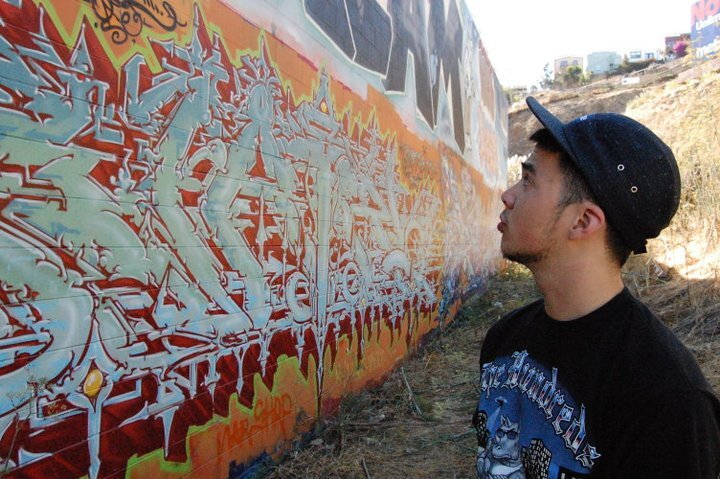
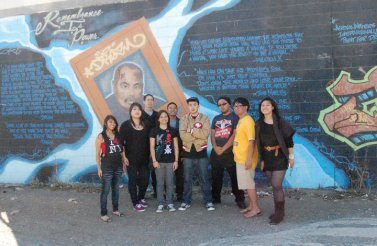
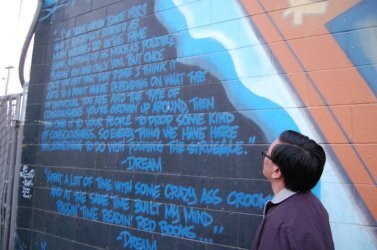
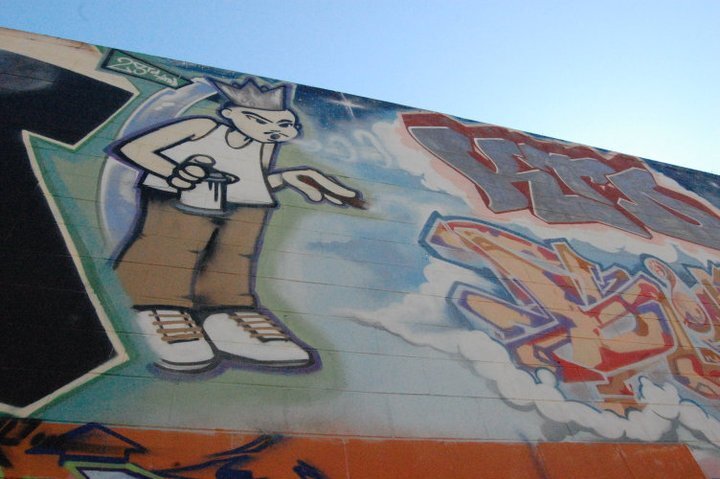
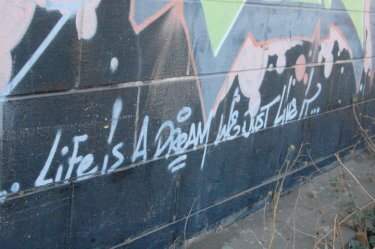
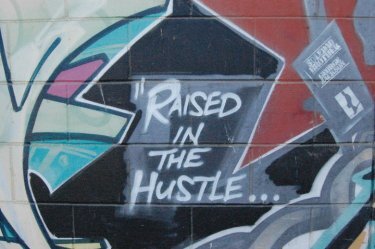
I couldn’t find any articles online about the closure of this area. Interestingly enough, the YBCA hillside DREAM installation took place in 2017, and my friends were recalling that the walls became gated about two years ago.. which would land us in 2017-2018.
DREAM tribute. Alemany DREAM walls, San Francisco. Photo by Joy Ng (2010).
Perhaps it’s what the gate represents that becomes heartbreaking— access. Graffiti has no regard for institutions. It exists where the artist dares to go. It is a culture of resistance and rebellion. Graf has its own rules and politics, but needs no permission. Access should not be a question. While I understand intentions to preserve the pieces from unwanted vandalism, the gates also block people who want to see and pay respects to Mike Dream. The gates remind me of the closure of Psycho City— which was once public lots in downtown San Francisco where it was legal to paint, until it was shut down permanently in the late 1990s. I’m reminded of the closure of Cellspace. Closure of the Galeria de la Raza. White washing of the Precita Eyes mural in the Mission. Not having access to the Dream walls, to be able to walk up to them, to admire the work, and being forcibly held back by this metal gate.. feels a lot like the other ways that we’ve been washed and locked out of our own city. I’m fearful that we’ll lose these walls. We’ve seen this happen. That’s why this is heartbreaking.
So when you drive down 280 south towards Daly City, or up 101 north towards Civic Center, or under the freeway overpass onto Alemany Boulevard, or when you visit the Alemany farmers market.. glance over and remember that those walls are sacred, and are a crucial piece of Bay Area art and hip hop history.
Rest in Peace, King Dream.
Sources & Hella Recommended:
Street Art SF. Remembering Mike Dream. Blog. Feb 28 2013.
12 Oz. Prophet. Forums. “Bus Flow/ SF Handstyles” Aug 29 2017.
Pyscho City:
(1) Online Flickr Gallery of Psycho City
(2) Graffiti Archeology News. Photos of paint layers. Blog. Jan 31 2004.Greschler, Gabriel; Waxmann, Laura. “Whitewashed mural reveals the role street art plays in the survival of the Mission’s culture.” 91.7FM San Francisco KALW Local Public Radio. Article. Aug 10 2017.
Mark, Julian. “Galeria de la Raza has moved, but its former home may be landmarked anyway.” Mission Local. Article. Jan 17 2019.
Stevenson, Kirk. “CA Graff Crew Celebrates 25 Years in the Making.” El Tecolote. Article. Jul 06 2018.

